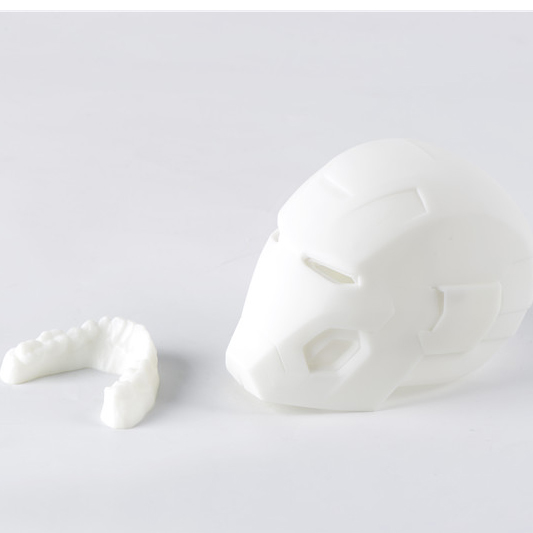Latest Blog
What is ultraviolet (UV) laser curing in SLA 3d printing
Nov 30 , 2022What is ultraviolet (UV) laser curing in SLA 3d printing
SLA is an additive manufacturing process that belongs to the reduced photopolymerization family. In SLA, objects are produced by selectively curing polymer resins layer by layer using ultraviolet (UV) laser beams. the material used in SLA is a photosensitive thermosetting polymer in liquid form. The light-curing molding process, also often referred to as stereolithography, is known in English as StereoLithography, or SL, or sometimes simply SLA (StereoLithography Apparatus), which was patented in the United States by Charles Hull in 1984 and was the first rapid prototyping technology to be developed. The process was patented by Charles Hull in 1984 and was the first rapid prototyping technology to be developed. Since 3D Systems first introduced the SLA commercial rapid prototyping machine in 1988, SLA has become one of the most mature and widely used typical RP technologies. It uses photosensitive resin as raw material and solidifies it by computer-controlled UV laser. This method can be simple and fully automatic manufacturing of complex three-dimensional shapes that have been difficult to produce by various processing methods, and has epoch-making significance in the field of processing technology.
Liquid photosensitive resin, helium-cadmium laser or argon ion laser emitted ultraviolet laser beam under the control of the control system in accordance with the parts of the layered cross-sectional information in the photosensitive resin surface for point-by-point scanning, so that the scanned area of the resin thin layer of photopolymerization reaction and curing, the formation of a thin layer of parts. After the curing of a layer, the table moved down a layer thickness of the distance, so that the original cured resin surface and then put a new layer of liquid resin, scraper will be more viscous resin surface scraping flat, and then the next layer of scanning process, the new cured layer firmly bonded to the previous layer, and so on until the entire part manufacturing is complete, to get a three-dimensional solid prototype.
The production of light-curing rapid prototyping can generally be divided into three stages: pre-processing, prototyping and post-processing. The pre-processing stage is mainly through the CAD design of three-dimensional solid model, the prototype data conversion, placement orientation to determine, apply support and the use of discrete programs to slice the model, design the scan path, the resulting data will precisely control the movement of the laser scanner and lifting table, in fact, is to prepare data for the production of the prototype; prototype production is on a special light-curing rapid prototyping equipment system Prototyping is performed on a dedicated light-curing rapid prototyping equipment system. Before prototyping, the light-curing rapid prototyping equipment system needs to be started in advance so that the temperature of the resin material reaches a preset reasonable temperature and the laser needs a certain stabilization time after ignition. Once the equipment is running normally, the prototyping control software is started and the layer data file generated by the pre-processing is read in to start the stack production. The whole process of light curing of the stacked layers is done automatically under the control of the software system, and the system stops automatically after all the stacked layers are made. After the prototype lamination is made in the rapid prototyping system, it needs to be peeled off and other subsequent processing work in order to remove the waste and support structure.
Nanosecond UV Lasers for SLA 3D printers

SLA technology is mainly used to make many kinds of molds and models, etc. It is also possible to replace the wax molds in investment casting with SLA prototype molds by adding other components to the raw materials. Therefore, the development trend is to develop photosensitive materials with low shrinkage, fast curing and high strength. The development trend of stereoscopic light-curing molding method is high-speed, energy-saving and environmental protection and miniaturization. The increasing precision of processing makes it possible to be the first in the field of biology, medicine, microelectronics, etc.